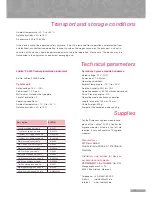
User’s manual
6
Handpiece
Application fields / intended purpose
The most common application fields for the micropigmentation instrument in the cosmetical sector are:
• Tiny hair drawing of eyebrows
• Drawing of eyeliners
• Full drawing of lips or optimisation of lip contours
• Application of body tattoos
The micropigmentation is also successfully used for follow-up treatments of surgeries, the retouching of
scars and the reconstruction of areolas.
Mode of action
During pigmentation colour pigments are visibly injected into the upper layers of the skin. A micropigmen-
tation lasts – depending on skin type and pigments – several years; however a minimum durability or a full
fading can not be guaranteed.
It is possible that the colour cannot be removed or that colour residues or scars could remain after the remo-
val. During the first 4 to 6 weeks the intensity of the injected pigments is reduced to the “permanent” level.
This is usual, as the epidermis (upper skin layer) is renewing itself and the pigments in this area are grown
out. The remaining visible colour therefore is located unde the epidermis. The thickness of the epidermis is
individually different and depends on the respective body section.
Note:
The handpiece – especially the contained motor therein – is a mechanical precision tool that may not be con-
taminated. Therefore no pigments should enter the motor. Damages that can be traced back to the entering
of pigments into the motor are not accepted as causes for complaints by the manufacturer. It furthermore
must be ensured that the cord of the handpiece is not buckled.
Insertion of the module
1. Plug the hygiene module onto the screw thread
2. Screw the hygiene module onto the handpiece with a clockwise rotation
1.
2.




































